Which WAY is the Camino de Santiago?
People have frequently asked me since I started walking on the Camino de Santiago.
You see, historically, way back when, a pilgrimage would start as the pilgrim left his front door, and would end upon arrival at the Cathedral of Santiago de Compostela. This is where the remains of Saint James lie and have been visited by pilgrims for the past 1,200 years.
Therefore, there were almost as many pilgrimages as there were pilgrims. Only recently has Spain started marking the Ways to Santiago, making the Camino more attractive and accessible to pilgrims.
When people talk about the Camino, they are generally referring to the most popular route, the French Way. This route runs, as the name suggests, from the French border with Spain to Galicia. However, there are now a handful of official, well-marked pilgrim routes. None of them are better or more authentic than the others.
Still the question remains the same:
Where exactly does the Camino go? Where should I go?
Well, to help you and any other pilgrim preparing a trip and overwhelmed by choice, we have put together a short guide to help you pick a Camino. Which will soon be your Camino!
This is where it starts to get exciting…
The most popular Way : the French Way
When people think of the Camino de Santiago, they are mostly thinking of this Camino – the Camino Francés. This is the Way the majority of people walk.
In 2019, the Compostela reported that over half of all pilgrims arrived in Santiago after having completed a part of or all of the French Way. Many pilgrims start in Saint-Jean-Pied-de-Port (French side of the Pyrenees) or Roncesvalles (Spanish side of the Pyrenees) and hike for over a month to arrive in Santiage. They cross through mountainous foothills, the “flat” Meseta and finally going over the hills once again into green and luscious Galicia. One of the great aspects of walking Every Inch of the Camino Francés is seeing the amazing diversity of Spanish scenery and culture.
Of course, if you wanted to hike for over a month, you could start in France in Vézéley (approximately 75 days to reach Compostela). Or in the south of France in Arles (70 days hiking); or more commonly in Le Puy (65 to 70 days to Compostela).
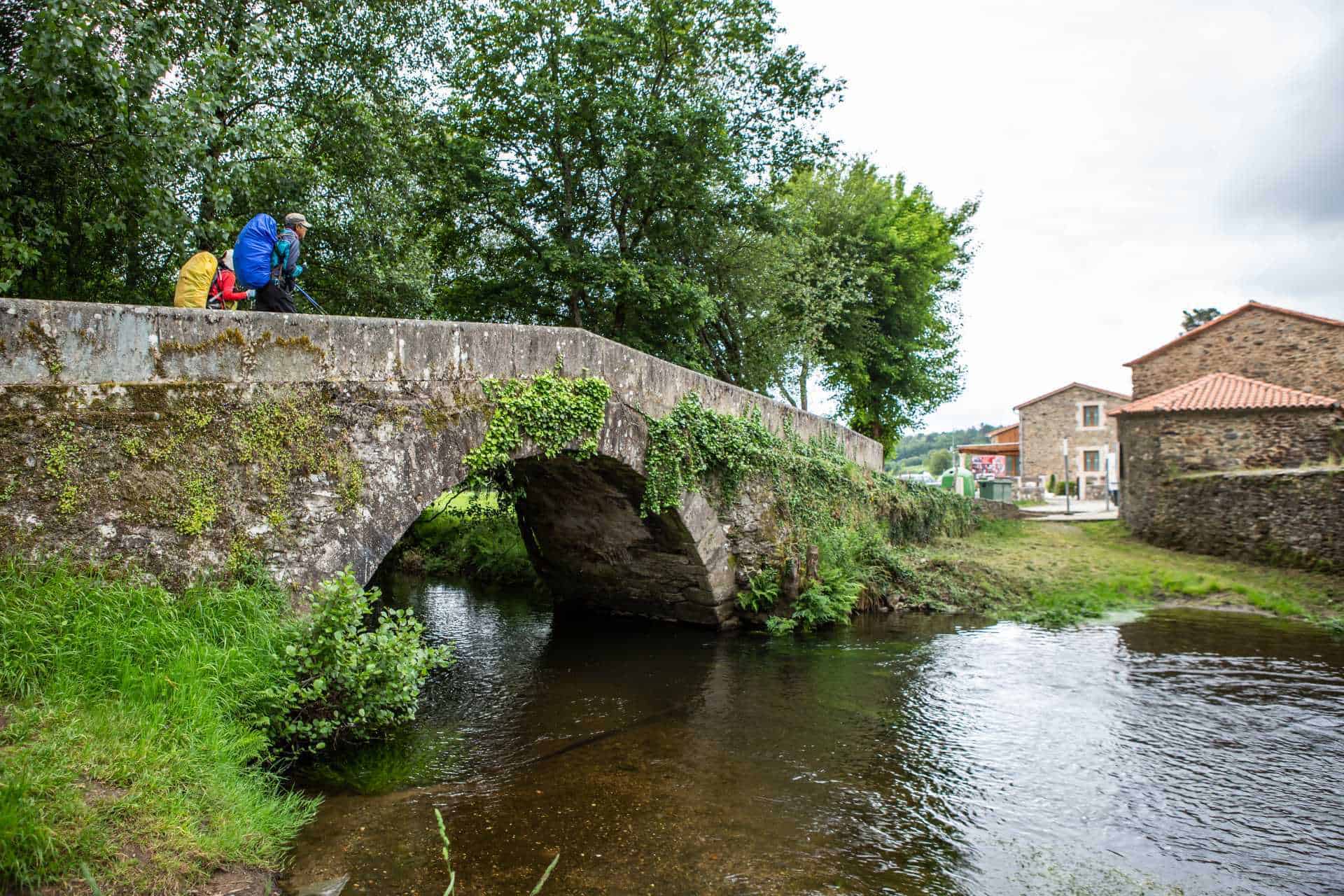
The Last 100KMs, Camino Frances
Many people, unfortunately, don’t have two and half months free to wander around Europe. These pilgrims start their journey 100 kilometers from Santiago, in a small town called Sarria. Well, technically 115km. Pilgrims who walk at least 100 kms and prove it by stamping their pilgrim credenciales (sort of like a pilgrim passport) receive a certificate of completion upon arrival. From Sarria, this Way takes anywhere from 5 to 7 days of hiking.
The advantages of this part of the Camino include the well-marked path and the numerous facilities along the Way (think cafés and bathroom stops!). This section often has more pilgrims than other sections, meaning you get to meet and experience cultures from all over the world. And not to mention the beauty of the landscape.
On the Last 100KMs of the Camino, you will see small stone villages alongside majestic green forests, rolling fields blending into river valleys and, of course, Santiago de Compostela’s historical and vibrant city center.
The most varied Way : The Camino Portuguese
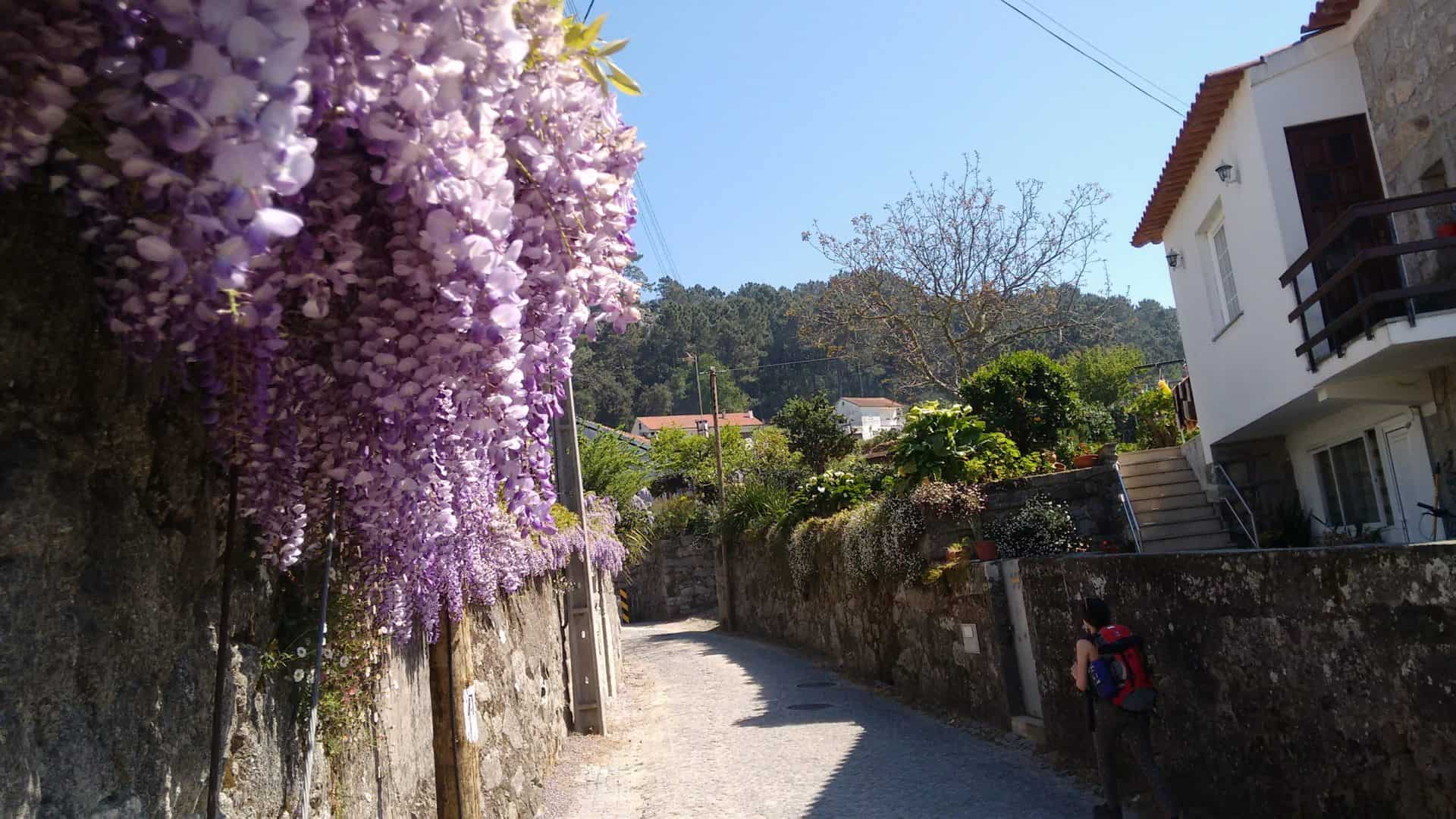
Is it the change of language? The change of food? The time difference? Yes, bizarrely, you will have to put your watch forward as you cross over the border between Portugal and Spain.
For those of you who have never done it, there is something thrilling about walking over a border. This one is materialised by an iron bridge which unites two countries that are still very different. (And thanks to the European Union, you don’t need to show your passport or anything. You just walk right over into a different country!)
On the Camino Portuguese, you can start out in bustling metropolis Porto (for a full 10 or 12 days of hiking); in Ponte de Lima, an enchanting medieval town; or Valença, a historical fortress on the border between Spain and Portugal. You will, in any case, continue on to tiny, cobblestoned villages decked with flowers as well as other charming, centuries-old city centers, like Pontevedra or Padron, where St James’s remains are said to have first washed up. But it also includes beautiful countryside, sometimes flat fields, other times gentle hills, and the odd walk through the woods or up one or two rather steeper slopes.
You will see the same changes in culture and language. As you cross over the border from Portugal to Spain, you will have to start saying “Buen Camino” instead of “Bom Caminho.” “Un vino tinto, por favor” instead of “um vinho tinto, por favor”. Yes, okay, Portuguese and Spanish language have much in common, especially in the border region of Galicia, where Santiago de Compostela is located. However, each have their own cultural specialties and quirks.
In Portugal, you will often see brightly colored roosters about the place. In Galicia, the path is sprinkled with typical horreos. In Portugal, you will finish your meal with an excellent copo de Porto. In Galicia, you can knock back a shot of licor de hierbas.
Did I forget to mention the food? Don’t even get me started on the food. The Camino Portuguese will take from strong coffee and pasteis de nata (a cream tart) in the morning, to the (in)famous francesinha (a sandwich made with ham, sausage and steak) at lunch. For dinner ,you can finish off with a wonderful bacalhau (cod) or sardinhas (sardines). Portugal has incredible food, freshly made from local ingredients, and is just what you will need after a day’s walk. They are also renowned for their beverages, be it coffee, wine or of course Port.
The quality and variety of food continues in Galicia, but with a slightly different twist. Your Andaspain guides will make sure you try caldo gallego, empanada (a meat pie) and pulpo a feira – all typical and delicious Galician dishes.
A little different path on the Camino: The Way to Fisterra
The road to Fisterra starts in Santiago de Compostela and so has a different feel to it. Walking to “the end of the world” instead of a Cathedral gives this Camino more of a wild, primitive feeling. That might come from the fact that it has been a pilgrimage for thousands of years.
Before Saint James’s remains ever washed up in Padron, Celtic populations would walk towards the sunset. These pilgrims would follow the Milky Way to the cliffs that marked the end of the known world.
Nowadays, many pilgrims walk to Fisterra because they arrived in Santiago and just couldn’t stop walking. But it is also a perfectly valid pilgrimage on its’ own. You can reach the town and lighthouse of Fisterra in three to four walking days.
The first part of the walk is inland, through tiny Galician hamlets and over rolling hills. Make sure you stop to dip your feet in the water under the beautiful Maceira bridge on your first day. Towards the end of the hike, allow time to dip your (now-sore) feet in the chilly Atlantic Ocean – there are many small beaches hidden away between Corcubion and the town of Fisterra. The lighthouse is another 3km from there, but don’t worry – the beautiful scenery will make it pass by really fast!
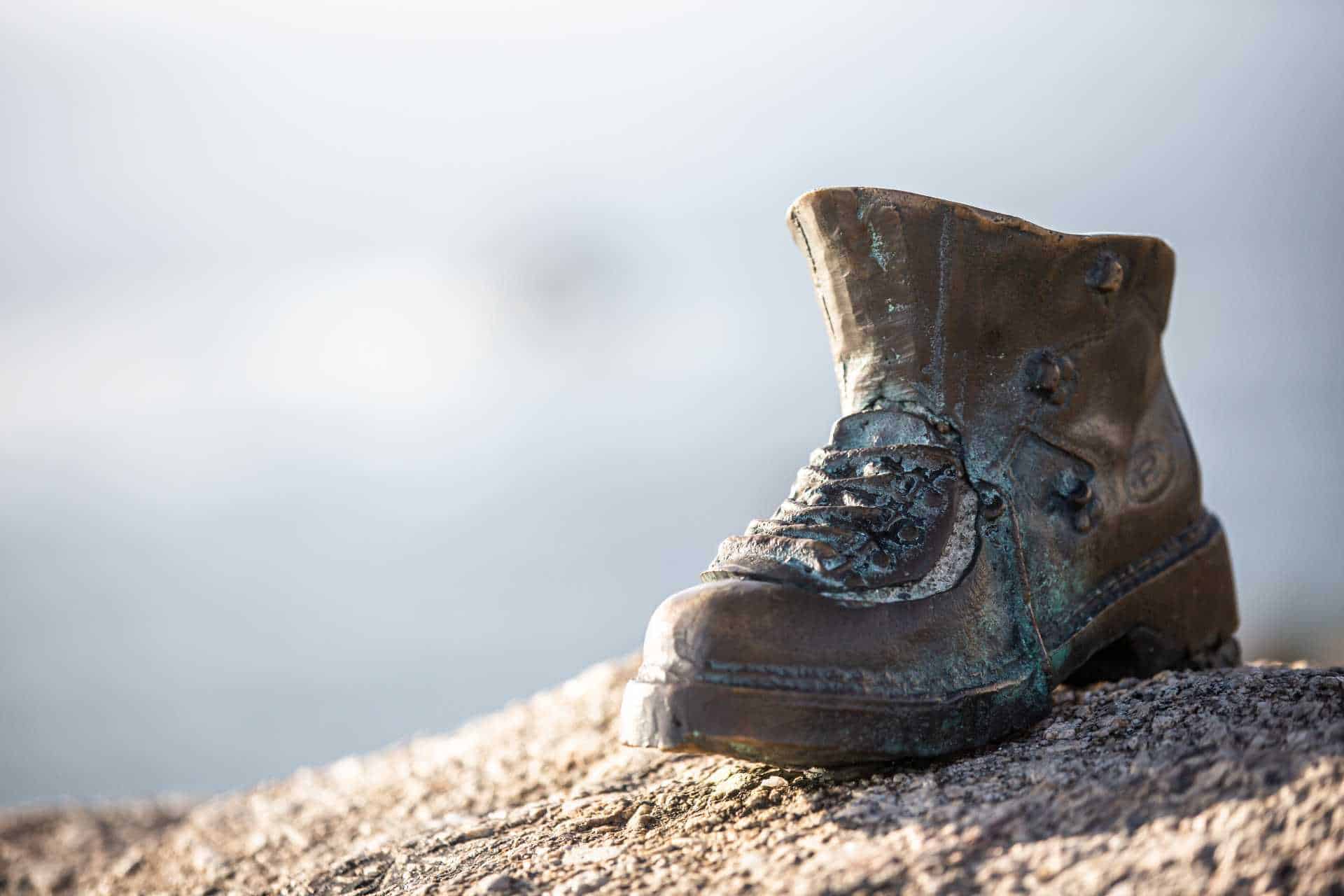
At Fisterra lighthouse there is also a 0KM marker, with the endless horizon as the perfect backdrop for your triumphant photo. Many pilgrims will hang around here and soak up the sun and the view of the ocean. The tradition is to burn your boots here (as you no longer need them) but that is now forbidden. Instead, there is a bronze sculpture of a boot representing all boots, burnt and needing to be burnt. You can grab some excellent seafood at Fisterra Port before catching the bus back to Santiago.
However, if your feet are still itching for just a few more days of hiking, you could also keep going to Muxia. The Way to Fisterra is a triangle, you see, between Santiago de Compostela, Fisterra and Muxia. It’s just another 31 km to Muxia – along the coast and through gorgeous forestry tracks. Tempted?
There are hundreds of kilometers of the Camino crisscrossing all over Spain, France, Italy and beyond … There’s got to be one out there for you! Once you choose The Way to go, you can walk the Camino your way!


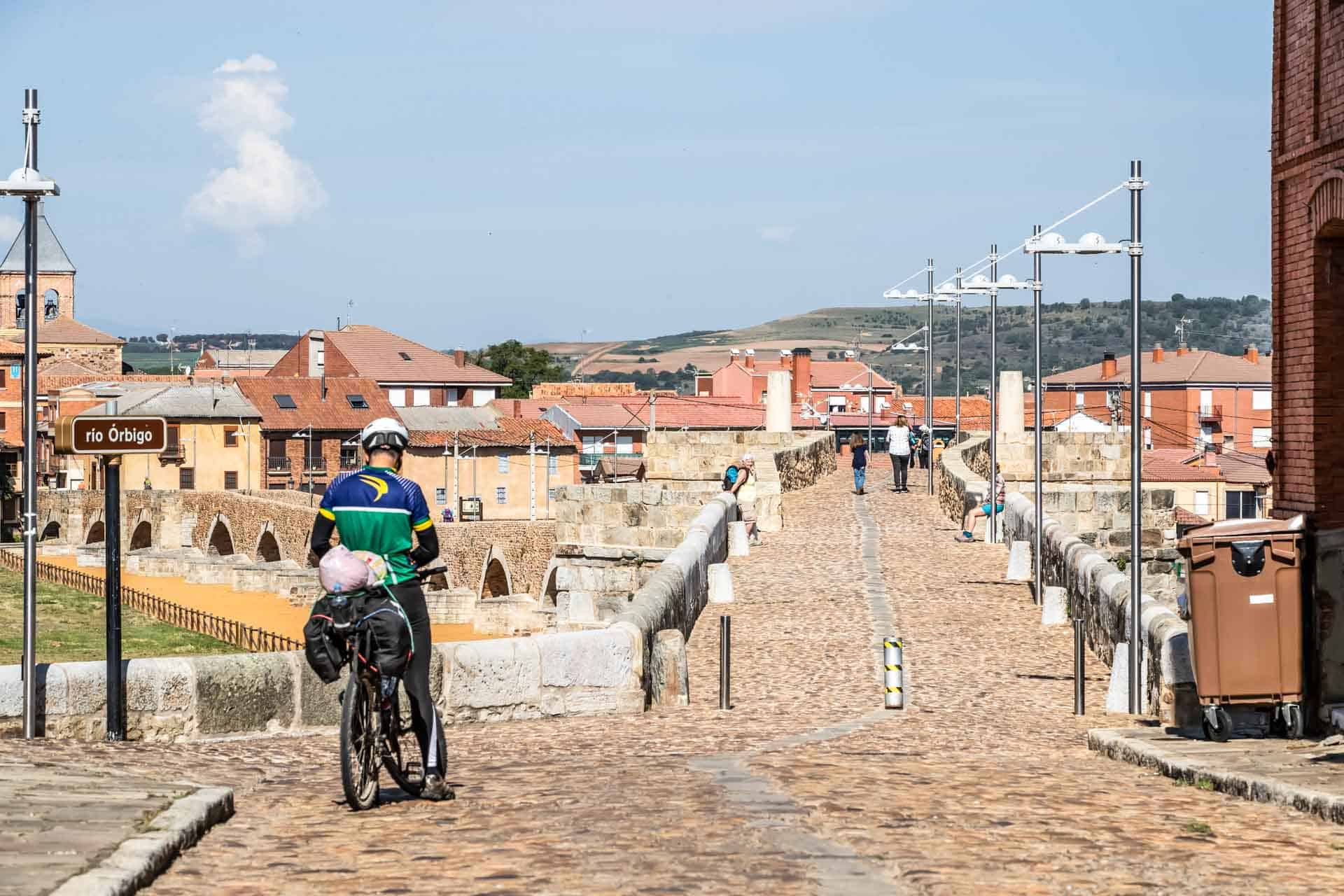




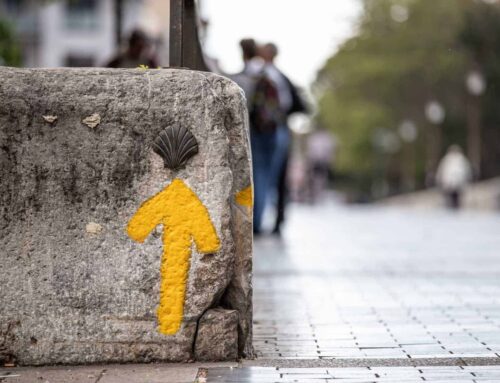
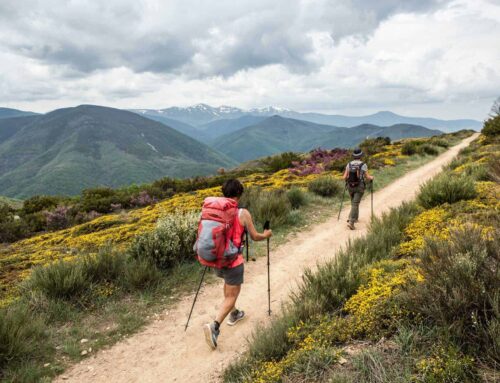
Leave A Comment